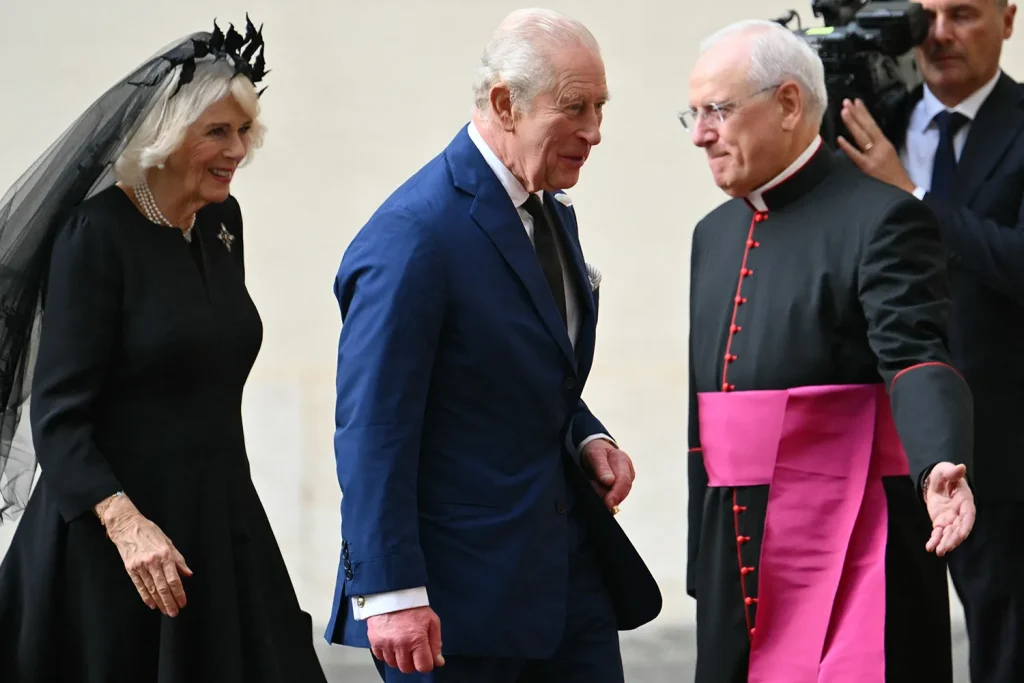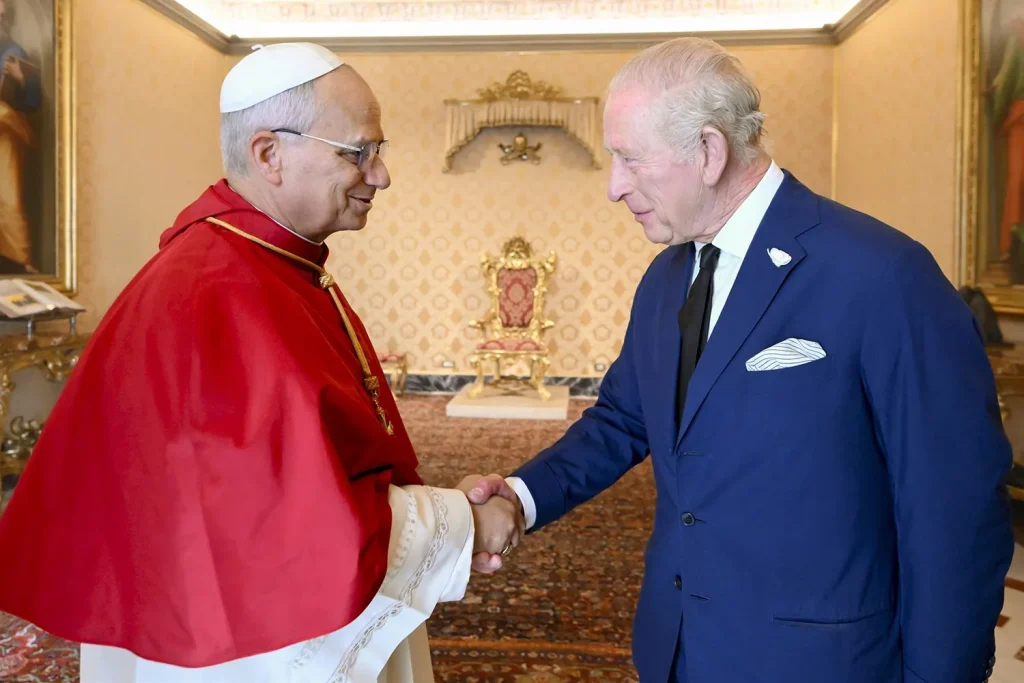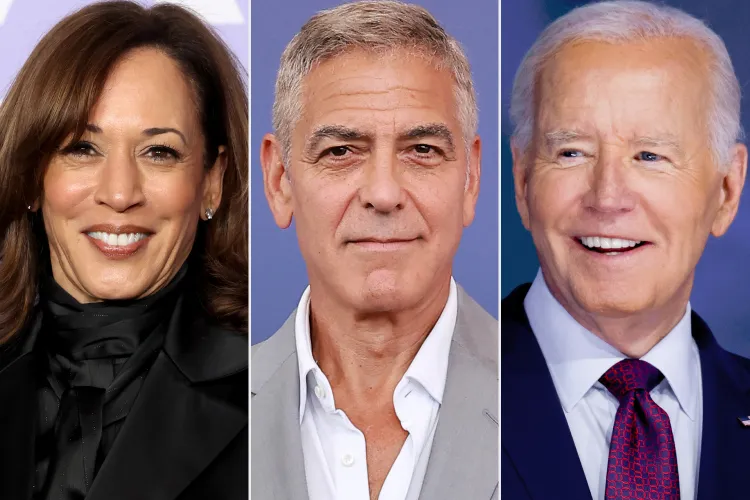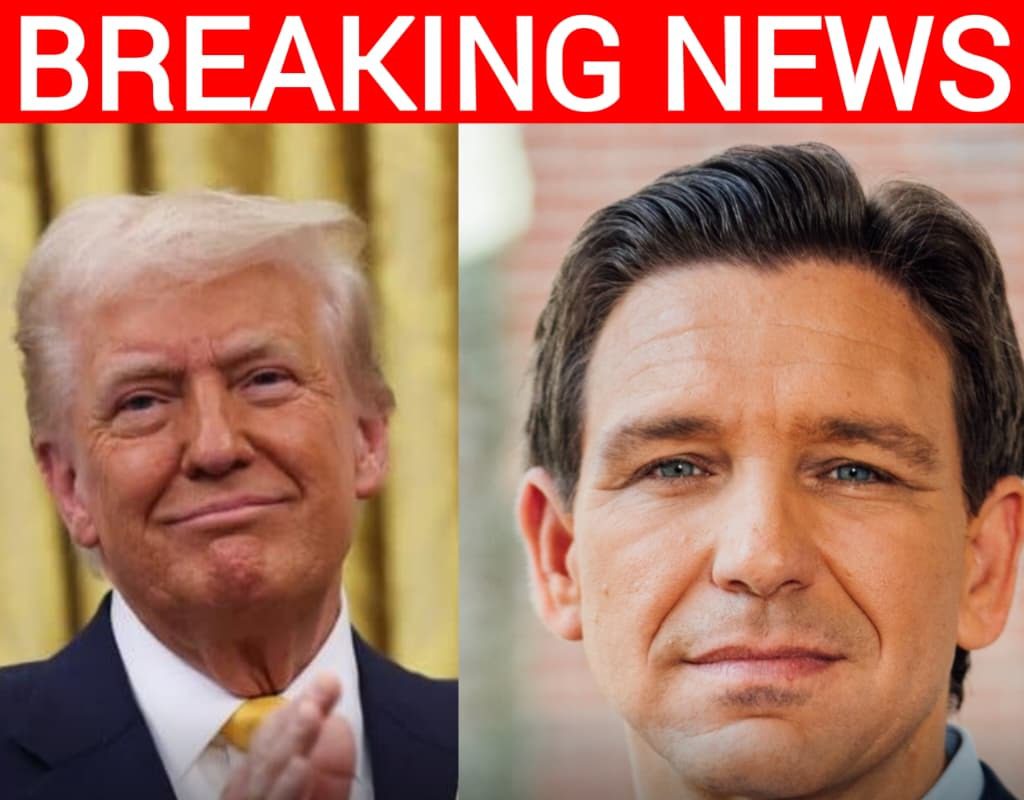King Charles and Queen Camilla Arrive at Vatican to Meet Pope Leo and Pray Together in a Historic First Since the Reformation
It was a moment centuries in the making — one that combined history, faith, and diplomacy under the same ancient roof. On Thursday, King Charles III and Queen Camilla arrived at the Vatican for a visit that would etch itself into the history books. Their meeting with Pope Leo marked not only a powerful gesture of reconciliation between the Church of England and the Catholic Church but also a deeply personal moment for the monarch, whose lifelong fascination with faith and unity has shaped much of his reign.

The visit began with quiet solemnity. As the royal couple stepped into the Vatican courtyard, the afternoon sun cast long golden shadows across the centuries-old stones. The King, wearing a navy blue suit, greeted the Pontiff with the calm warmth that has become his signature. Beside him, Queen Camilla stood dignified in black, adorned with a traditional veil, her presence a reflection of respect for Vatican tradition.
Inside the Vatican Palace, the meeting between King Charles and Pope Leo was both formal and intimate. The two men spoke privately for nearly 45 minutes — a discussion said to have touched on climate change, humanitarian cooperation, and the role of faith in healing global divisions. But the moment that followed captured the world’s attention: an invitation for the King to join Pope Leo in prayer at the Sistine Chapel.

For the first time in nearly 500 years, a British monarch prayed publicly alongside a Pope — an extraordinary act of unity between two faiths that once stood fiercely divided. The quiet echoes of their prayer beneath Michelangelo’s painted ceiling carried a symbolic weight few moments in modern royal history could match.
A royal aide described the atmosphere as “profound and deeply moving.” Observers noted that King Charles, a long-time advocate of interfaith harmony, appeared visibly emotional during the service. “For His Majesty, this was not just a meeting of political or religious significance — it was a personal mission,” the aide shared.

The Reformation of the 16th century fractured the relationship between the British crown and the papacy, a divide that lingered for centuries. While previous monarchs have met Popes privately, none had ever joined in public prayer. King Charles’s decision to do so reflects both his belief in the shared moral power of faith and his vision of a world united by compassion rather than separated by doctrine.
After the service, King Charles and Pope Leo exchanged gifts. The King presented a hand-crafted silver cross from Welsh artisans, while the Pope offered a rare illustrated manuscript on Christian ecology — a nod to their shared concern for the environment.
Queen Camilla, meanwhile, was seen engaging warmly with Vatican officials and guests. Her understated presence — elegant, composed, and quietly supportive — reflected the growing respect she has earned on the world stage since becoming Queen.

The Vatican visit comes during a challenging period for the British monarchy, as King Charles continues to balance royal duties with a mission to redefine what the Crown stands for in a modern, multicultural world. This meeting, however, seemed to transcend politics and protocol. It was a moment rooted in the belief that faith — regardless of denomination — can serve as a bridge rather than a barrier.
As the King and Queen departed the Vatican, the day’s symbolism lingered. The royal motorcade moved slowly past St. Peter’s Basilica, and the King turned briefly to look back at the dome glowing under the Roman sun. It was, as one observer put it, “the past and the present meeting halfway — not to rewrite history, but to begin healing it.”

For the first time in five centuries, a British monarch stood side by side with a Pope in prayer. The gesture may have lasted only minutes, but its echo — of peace, humility, and reconciliation — will be felt for generations to come.



